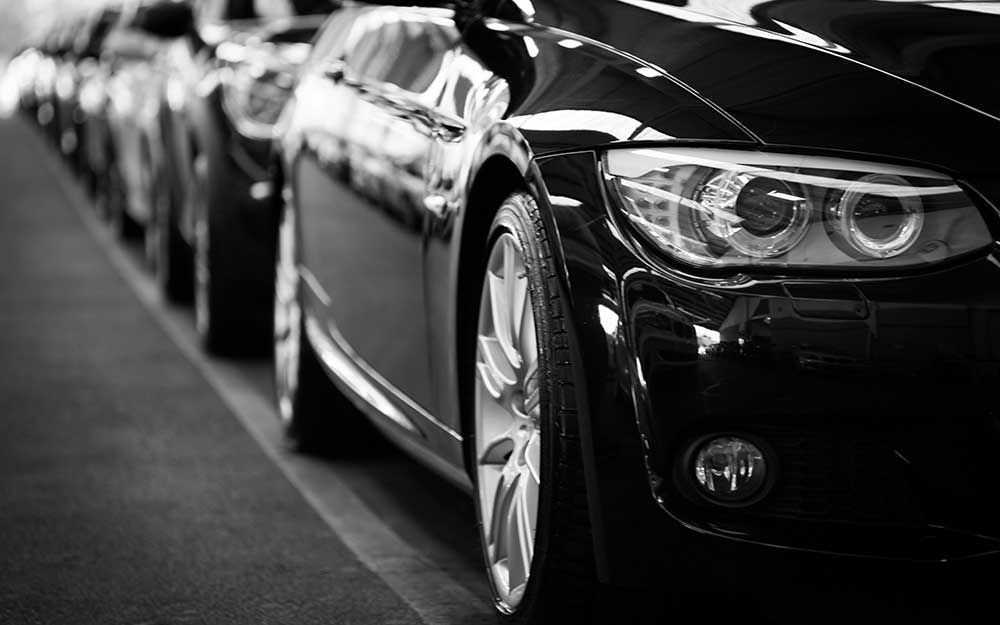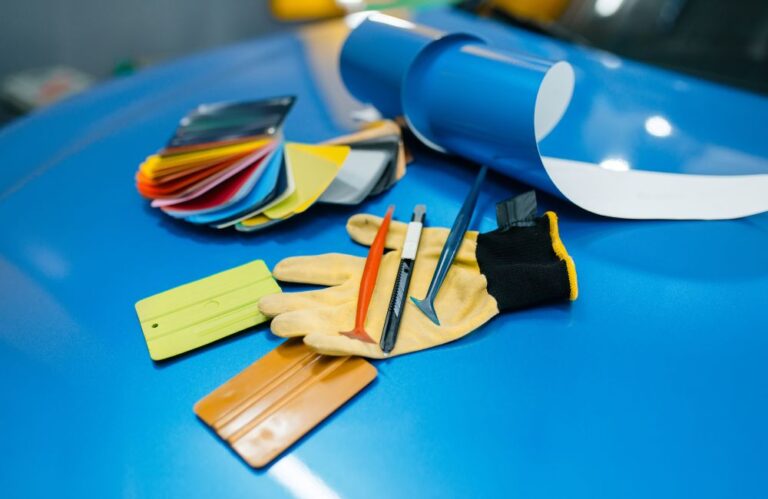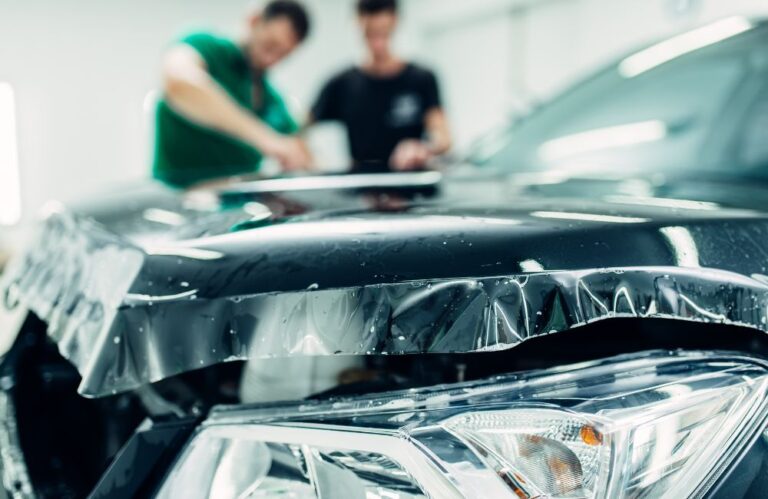Ceramic coating has become a go-to solution for car enthusiasts and everyday drivers who want to protect their vehicle’s appearance and minimize maintenance efforts. Studies show that the automotive and transportation sector is expected to capture a 32% market share of ceramic coatings in the coming years. But even the best ceramic coatings don’t last forever. Knowing when to refresh your ceramic coating can help you maintain your car’s pristine look and protective benefits. Let’s delve into seven signs that indicate your ceramic coating needs attention.
Table of Contents
Introduction
Key Takeaways
Why Consider Ceramic Coating for Your Car?
7 Signs Your Car Needs a Ceramic Coating Refresh
How to Refresh Your Ceramic Coating
Frequently Asked Questions
Key Takeaways
✔ Look for fading gloss, reduced water beading, increased dirt retention, more frequent scratches, visible chemical stains, and changes in the texture to assess the health of your ceramic coating.
✔ Consider the coating’s lifespan, which typically ranges from two to five years, to indicate when it might need refreshing.
✔ Thoroughly clean and decontaminate the vehicle’s surface and, if necessary, polish the paint before reapplying the coating.
✔ Decide whether to apply the new coating yourself or seek professional help based on your comfort and experience.
✔ If DIY, ensure a controlled environment and adhere strictly to the product’s application instructions.
✔ After application, allow the coating to cure fully as recommended, avoiding moisture and not washing the car during this period.
✔ Keep the coating in good condition with regular washing using suitable products and routine inspections to maximize longevity and effectiveness.
|
Why Consider Ceramic Coating for Your Car?
Ceramic coating has become popular among car owners for its exceptional protective qualities and ability to preserve the car’s aesthetic appeal. In 2021, the worldwide market for ceramic coatings was valued at USD 9.75 billion and is projected to grow at a compound annual growth rate (CAGR) of 7.8% from 2022 to 2030.
Here are the key reasons why considering ceramic coating for your car is a wise choice:
Enhanced Paint Protection
Ceramic coatings provide a strong, protective surface for your car’s exterior, helping shield the paint from various environmental threats. This includes protection from ultraviolet (UV) rays that can cause fading and oxidation over time. By forming a barrier on the surface, ceramic coatings prevent these elements from directly impacting the paint, thus preserving the car’s color and gloss.
Improved Dirt and Water Repellence
One of the most significant benefits of ceramic coating is its hydrophobic (water-repellent) nature. The coating effectively repels water, meaning rain and water splashes will bead up and roll off the surface, along with dirt and mud. This makes cleaning your car much easier and less frequent. Since contaminants are less likely to stick to the surface, the risk of staining and water spots is significantly reduced.
Increased Durability
Unlike traditional waxes that wear off after a few months, ceramic coatings can last several years. These coatings are made from silicon dioxide (silica), which hardens them into a durable shield. This long-lasting nature makes ceramic coatings an excellent investment for long-term protection, reducing the need for frequent applications.
Chemical Resistance
Ceramic coatings also offer a high level of chemical resistance. This is particularly important for protecting against acidic contaminants, such as bird droppings, tree sap, or acid rain, which can etch or degrade the paint over time. The chemical resistance of ceramic coatings ensures that these contaminants can be cleaned off easily without harming the paint.
Enhanced Gloss and Aesthetics
Beyond protection, ceramic coatings also enhance the appearance of the vehicle. The coating adds a glossy, rich finish, making the paint’s color pop more dramatically. This makes the vehicle look better and can increase its aesthetic appeal significantly, which is particularly valuable for luxury or custom cars.
Cost-Effectiveness
While the initial cost of applying a ceramic coating is higher than that of regular wax, its longevity, and durability make it a cost-effective solution in the long run by protecting the paint and reducing the need for frequent detailing services and repairs from environmental damage, a ceramic coating can save money over the vehicle’s lifespan.
Preservation of Vehicle Resale Value
Finally, maintaining your car’s exterior in pristine condition can help preserve or even enhance its resale value. A car with a well-maintained exterior, free from scratches, swirl marks, and faded paint, is likely to attract higher offers from potential buyers.
Considering a Ceramic Coating? Watch this First!
7 Signs Your Car Needs a Ceramic Coating Refresh
Recognizing when your ceramic coating is no longer performing at its best is essential. Here are seven signs to look out for:
1. Fading Gloss and Reduced Shine
Ceramic coatings provide a transparent, protective layer over the car’s paint. This layer is meant to be hard and glass-like, reflecting light uniformly and giving the vehicle a constant “wet look.” The gloss level provided by the ceramic coating is one of its most noticeable attributes right after application.
Indications of Wearing Off
Over time, the ceramic coating can begin to degrade due to several factors:
- Environmental impacts: Prolonged exposure to UV rays, harsh weather conditions, and acidic contaminants (like bird droppings and tree sap) can break down the coating.
- Physical abrasion: Frequent washing, incorrect washing techniques, or abrasive cleaning products can wear away the ceramic layer.
- Quality and application of the coating: Lower-quality coatings or improper application can lead to faster degradation.
Why Gloss Fades
As the ceramic coating wears off:
- Surface roughness increases: Microscopic roughness on the coating surface scatters light, reducing the surface’s ability to reflect light clearly and uniformly. Instead of a smooth, glossy finish, the surface starts appearing duller.
- Reduced hydrophobic properties: Part of what contributes to a glossy look is the coating’s hydrophobic nature, which causes water to bead up and roll off the surface, taking dirt and contaminants with it. As the coating wears off, water spreads out more evenly, and the surface becomes more prone to water spots and stains, diminishing its shine.
2. Water Doesn’t Bead Up Anymore
Water beading refers to the phenomenon where water forms tiny, round beads on a surface rather than spreading out flat. This occurs due to the hydrophobic (water-repellent) properties of a surface. Ceramic coatings enhance the hydrophobicity of your car’s exterior surfaces, causing water to bead and roll off easily.
This can be due to several reasons:
- Environmental Wear and Tear: Continuous exposure to harsh environmental conditions like UV rays, salt, and pollutants can degrade the ceramic coating over time.
- Physical Abrasion: Regular washing or harsh cleaning tools/materials can wear down the coating.
- Poor Quality or Application: If the ceramic coating was not applied correctly, or if a lower-quality product was used, its lifespan and effectiveness might be compromised.
3. Increased Staining and Dirt Retention
Ceramic coatings create a protective barrier over your car’s paint. This barrier is not only hard and durable but also slick, which reduces the surface tension and prevents dirt and moisture from sticking to the paint. When water hits a well-coated car, it beads up and rolls off, taking surface dirt and grime. This effect keeps the car cleaner and makes washing it much easier and more efficient.
This can be caused by:
- Age and Wear: Over time, exposure to environmental factors like UV rays, harsh weather, and acidic pollutants can deteriorate the coating.
- Improper Maintenance: Harsh detergents or abrasive washing tools can wear down the coating prematurely. Even something as simple as washing the car in direct sunlight can affect the longevity and effectiveness of the coating.
- Quality of Application: A poorly applied ceramic coating may have uneven coverage, leading to patchy areas where dirt and stains can adhere more easily.
4. Scratches and Swirl Marks Appear More Frequently
Ceramic coatings form a hard, protective layer over the car’s paint. This layer is typically made from materials like silicon dioxide (silica) derived from natural minerals. When cured, this layer forms a solid bond with the paint, creating a much harder surface than the original paint alone.
The primary ways ceramic coatings protect against scratches and swirls include:
- Hardness: The hardness of the coating itself helps resist minor abrasions that would otherwise easily damage regular paint. This includes light scratches from washing, dry dust wipes, or minor brushes against the vehicle.
- Reduced Friction: The slickness of the ceramic surface reduces friction when objects come into contact with the car. This means many objects that might scrape or scuff the paint will slide off more easily without leaving a mark.
- Thickness: While ceramic coatings are pretty thin, they add an extra layer of material on top of the paint. This extra layer can help absorb impacts that might otherwise cause fine scratches.
5. Chemical Stains and Etching Marks
Chemical stains and etching are usually caused by acidic or alkaline substances that come into contact with your car’s paint. Common culprits include:
- Bird droppings: These are highly acidic and can quickly etch into the paint if not removed promptly.
- Tree sap: This can harden on the surface and bond chemically with the paint. When removed, it may leave stains or pull off some of the paint.
- Acid rain: Rainwater contaminated with environmental pollutants can leave spots that etch into the paint.
- Road salt: Used in colder climates to manage ice, road salt is corrosive and can cause pitting and staining on unprotected surfaces.
How Ceramic Coatings Protect Against Chemical Damage
Ceramic coatings create a chemically resistant barrier. This barrier does not allow acidic or alkaline substances to contact the paint directly. Instead, these substances sit atop the ceramic layer, where they can be washed away without interacting with the paint. Additionally, the hydrophobic properties of ceramic coatings mean that water and other liquids bead up and roll off the surface, taking many potential contaminants with them.
6. Age of the Coating
As ceramic coatings age, they gradually lose some protective properties, including UV protection, hydrophobicity (water-repelling qualities), and chemical resistance. This degradation doesn’t usually happen suddenly but somewhat diminishes over time, making it hard to notice until considerable wear has occurred.
- Quality of the Coating: Higher quality coatings, which often contain a higher percentage of silica, tend to last longer due to their enhanced durability and stronger chemical bonds with the car’s paint.
- Professional vs. DIY Application: Professionally applied coatings are usually more durable because they involve more thorough paint surface preparation and often use superior products. DIY kits can be effective but might not provide the same level of performance or longevity.
- Environmental Conditions: Exposure to harsh environmental conditions like extreme temperatures, intense sunlight (UV rays), heavy rain, snow, and ice can accelerate the degradation of the coating. Vehicles in more demanding climates may require more frequent recoating.
- Maintenance Practices: How the car is maintained also plays a significant role in the lifespan of the coating. Regular washing with appropriate, non-abrasive cleaners, avoiding mechanical car washes, and keeping the vehicle in a garage or under a cover can extend the life of a ceramic coating.
- Driving and Usage Habits: Frequent driving on rough, dirty roads or areas with potential for chemical exposure (like salty roads in winter) can also wear down the coating faster.
7. Changes in the Texture of the Coating
The tactile feel of a ceramic-coated surface is an essential indicator of its condition and effectiveness. A proper ceramic coating should leave the car’s exterior feeling notably smooth and slick. Changes in this texture can provide critical insights into the health of the coating. Let’s discuss why a ceramic coating might start feeling rough or gritty and what steps should be taken to respond.
Sign of a Healthy Ceramic Coating
A well-applied ceramic coating offers a smooth, glass-like finish. This smoothness is not just aesthetic; it plays a critical role in the functionality of the coating:
- Hydrophobic Properties: The smooth surface helps repel water and oil, causing them to bead up and slide off, reducing staining and dirt accumulation.
- Reduced Surface Friction: A smooth coating decreases the friction of the surface, minimizing the abrasion from dust, dirt, and cleaning processes that can cause fine scratches.
How to Refresh Your Ceramic Coating
Refreshing your ceramic coating is essential in maintaining the long-term aesthetics and protective capabilities of your vehicle’s paint. Whether you choose to reapply the coating yourself or opt for professional services can depend on various factors, including your own experience, the condition of the existing coating, and your car’s specific needs. Here’s how to refresh your ceramic coating.
Assess the Condition of the Existing Coating
Before deciding on the best course of action, inspect the ceramic coating for signs of wear, such as fading gloss, decreased hydrophobicity, scratches, or a rough texture. It’s important to determine whether a simple maintenance wash might suffice or if a complete reapplication is necessary.
Prepare the Surface
Whether you’re touching up a few areas or doing a full reapplication, proper surface preparation is crucial:
- Cleaning: Wash your car thoroughly to remove all surface dirt, dust, and grime. Use a high-quality, pH-neutral soap that’s safe for ceramic coatings.
- Decontamination: Use a clay bar or a chemical decontaminant to remove embedded contaminants from the paint surface that washing alone can’t remove.
- Polishing: Polishing may be necessary if the coating is heavily worn or the paint beneath shows defects. This step should ideally be done by professionals, as improper polishing can cause further damage to the paint.
Reapply the Ceramic Coating
- DIY Application: If you have experience applying ceramic coatings and the right environment (a clean, controlled space), you can reapply the coating yourself. Follow the manufacturer’s instructions closely:
- Apply the coating evenly with an applicator pad.
- Ensure the temperature and humidity levels are within the recommended range to avoid premature curing or uneven application.
- Allow the coating to cure for the specified time, which may require keeping the car indoors or away from adverse weather conditions.
- Professional Application: Professional reapplication from trusted companies like Car Wrap – Illmatic Wraps NYC is the most recommended route. Companies like them have access to high-quality materials and controlled environments that ensure the coating is applied evenly and cures properly. They can also address any paint correction issues before applying the new coating.
Post-Application Care
After reapplying the ceramic coating, it’s essential to follow proper post-application care:
- Curing Time: Allow the ceramic coating to cure fully. This process can take anywhere from 24 hours to several days, depending on the product and environmental conditions.
- Avoid Water: Keep the car dry and avoid washing it during curing.
- Regular Maintenance: Once cured, maintain the coating by washing the car regularly with suitable products, avoiding abrasive materials, and storing the car in a garage or under a cover if possible.
Regular Inspection
Regularly inspect the coating to ensure it continues to perform as expected. Look for signs of wear or degradation and address them promptly to maintain the coating’s effectiveness.
Frequently Asked Questions
Can Ceramic Coating Be Removed?
Yes, ceramic coatings can be removed, but it requires professional assistance. The process involves polishing the paint, which removes the coating and a thin layer of the vehicle’s clear coat. This should be done cautiously to avoid damaging the paint.
Does Ceramic Coating Prevent Rust?
While ceramic coatings do not directly prevent rust, they can significantly reduce the risk by providing a barrier that prevents water and oxygen from reaching the metal. However, existing rust must be treated before applying a ceramic coating.
Is Ceramic Coating Safe for All Paint Colors?
Yes, ceramic coatings are safe for all paint colors. They are clear coatings that enhance the underlying color without altering it, adding gloss and depth to the paint’s appearance regardless of its color.
How Long Does It Take to Apply Ceramic Coating?
The application process for ceramic coating can take 1 to 5 days, depending on the vehicle’s condition and the thoroughness of the prep work. This includes cleaning, decontamination, possibly polishing, and allowing the coating to cure.
Can Ceramic Coating Be Applied to Glass and Wheels?
Yes, ceramic coatings can be applied to glass and wheels. Specialized ceramic coatings are designed for these surfaces to enhance visibility and reduce dirt and brake dust buildup, making cleaning much easier.
Ready to Elevate Your Vehicle’s Protection?
Looking to give your car the ultimate protection and a stunning new look? Consider a professional ceramic coating application from Car Wrap – Illmatic Wraps NYC. Our expert team specializes in high-quality car wraps and ceramic coatings that enhance your vehicle’s appearance and provide long-lasting protection against the elements. Don’t wait to give your car the care it deserves.
Contact Car Wrap – Illmatic Wraps NYC today to schedule your appointment in New York and see how we can transform your ride with superior protection and style!




